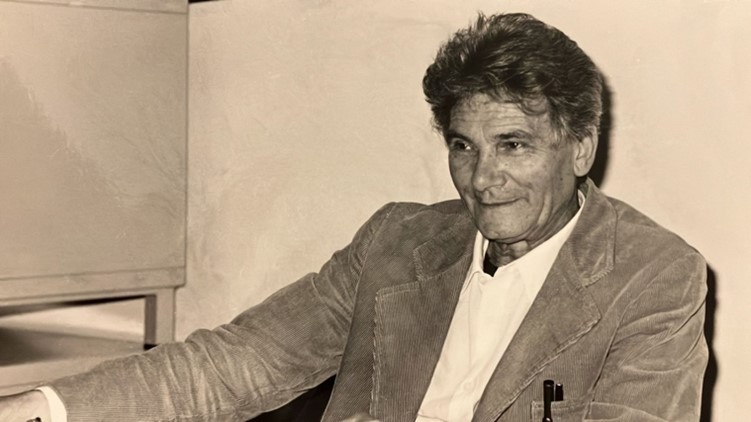Born in Trieste on 18 August 1913, a city of the Austro-Hungarian Empire, he graduated in philosophy from Padua in 1938, under the guidance of Cesare Musatti. After the war, he began working in important research centres like the Olivetti Psychology Laboratory of Ivrea, the University of Florence, where he assisted Metelli, and thereafter the University of Milan, again as assistant, but this time for his maestro, Musatti. He returned to his city of birth in 1953, when he was awarded the Faculty of Psychology and would then stay there for the rest of his career.
His scientific work, focussed on psychology, almost exclusively regarded the study of visual perception and his theoretical ideas were progressively directed towards Gestaltist theories. In Kanizsa’s research, the time spent in Trieste was without doubt his happiest. During those years, he focussed on two closely-linked topics. The first was the modifications of phenomic qualities of colour. The second, to which his international fame would then be linked, is that of the abnormal figures, figures outlined by “quasi-perceptual margins”, according to the definition given by Kanizsa himself. The famous triangle with quasi-perceptual margins was to be presented in 1954 for the first time at the 10th Meeting of Italian psychologists of Chianciano. In actual fact, he was by then the fulcrum of Italian research into perception. Over the years that followed, he explored various topics of research linked to perception including, in 1955, phenomenal transparency, which would then later be developed particularly by Metelli, and in the late 1960s, amodal completion.
Kanizsa was an extraordinary cultural driver of Italian psychology: in 1973, with a group of far younger scholars, Minguzzi, Vicario, Umiltà, Legrenzi, Luccio and Palmonari, he launched the “Giornale Italiano di Psicologia”, the first Italian magazine (today this sounds incredible) that envisaged the opinion of two referees to publish a work. At the same time, he was passionate in his organisation of national and international meetings. In the late 1960s, Kanizsa created the Incontri triestini sulla percezione, institutionalising the informal, sporadic local meetings on perception that had already been held for some years. These were occasions at which in the Trieste institute (and during memorable food and wine appreciation excursions on the Karst plateau), the Italian perception scholars, particularly of the Padua-Bologna-Trieste triangle, also had the opportunity to compare notes with a foreign scholar. The pact was that there should be no discussion of research that was already over, but, in an entirely informal manner (the programme was formulated when the guests arrived), rather they should describe what they were doing, so as to be able to make use of colleagues’ suggestions.
However, there was another extraordinarily interesting side to his personality: Kanizsa the painter. He had begun painting almost by chance, putting black dots on white canvas, forming, without a precise initial project, but rather according to a development that organised itself during the course of the work, forms and structures in groupings.
The artistic, innovative quality of his pictorial work is well evidenced: exhibitions at the Venice Art Exhibition and participation in numerous personal and collective national and international exhibitions. He was particularly proud of this artistic vocation.
External links
GK su “Il Mulino” (in Italian)
RAI Cultura. I giganti della scienza(in Italian)
Il mio triangolo(in Italian)

